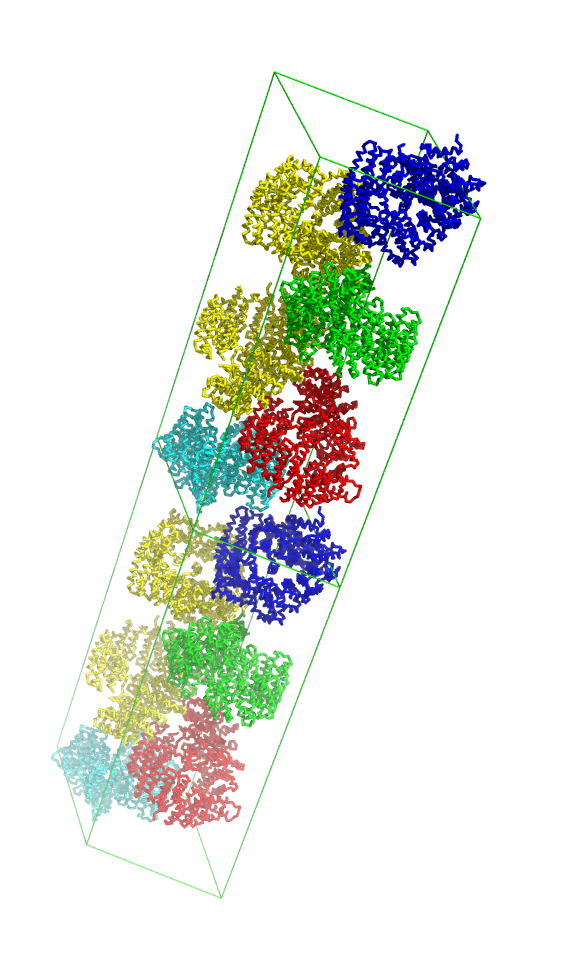Supercell: Difference between revisions
Jump to navigation
Jump to search
(symexpcell) |
(remove code) |
||
| (5 intermediate revisions by the same user not shown) | |||
| Line 1: | Line 1: | ||
= | {{Infobox psico | ||
|module = psico.xtal | |||
}} | |||
[[File:SupercellExample.png|200px|thumb|right|Example with 2 unit cells in c-direction, created with: supercell 1,1,2,2x19]] | |||
'''supercell''' can display multiple copies of the unit cell. | |||
Can also fill the unit cell (and its copies) with symmetry mates. | Can also fill the unit cell (and its copies) with symmetry mates. | ||
See [http://sourceforge.net/mailarchive/forum.php?thread_name=l2vdcf611bd1004140816zeca28714mf76b9f72008099ab%40mail.gmail.com&forum_name=pymol-users thread on pymol-users mailing list]. | See [http://sourceforge.net/mailarchive/forum.php?thread_name=l2vdcf611bd1004140816zeca28714mf76b9f72008099ab%40mail.gmail.com&forum_name=pymol-users thread on pymol-users mailing list]. | ||
= Example = | Requires [http://numpy.scipy.org numpy]. | ||
== Example == | |||
<source lang="python"> | <source lang="python"> | ||
run | # import psico.xtal, or run the standalone script: | ||
run https://raw.githubusercontent.com/speleo3/pymol-psico/master/psico/xtal.py | |||
fetch 2x19, async=0 | fetch 2x19, async=0 | ||
supercell 2,1,1, 2x19, green | supercell 2,1,1, 2x19, green | ||
supercell 1,1,2, 2x19, orange, name=super2 | supercell 1,1,2, 2x19, orange, name=super2 | ||
</source> | </source> | ||
= | == See Also == | ||
* [[SuperSym]] | |||
* [[symexp]] | |||
[[Category:Script_Library]] | [[Category:Script_Library]] | ||
[[Category:Math_Scripts]] | [[Category:Math_Scripts]] | ||
Latest revision as of 04:24, 1 July 2020
|
Included in psico | |
| Module | psico.xtal |
|---|---|
supercell can display multiple copies of the unit cell. Can also fill the unit cell (and its copies) with symmetry mates.
See thread on pymol-users mailing list.
Requires numpy.
Example
# import psico.xtal, or run the standalone script:
run https://raw.githubusercontent.com/speleo3/pymol-psico/master/psico/xtal.py
fetch 2x19, async=0
supercell 2,1,1, 2x19, green
supercell 1,1,2, 2x19, orange, name=super2
